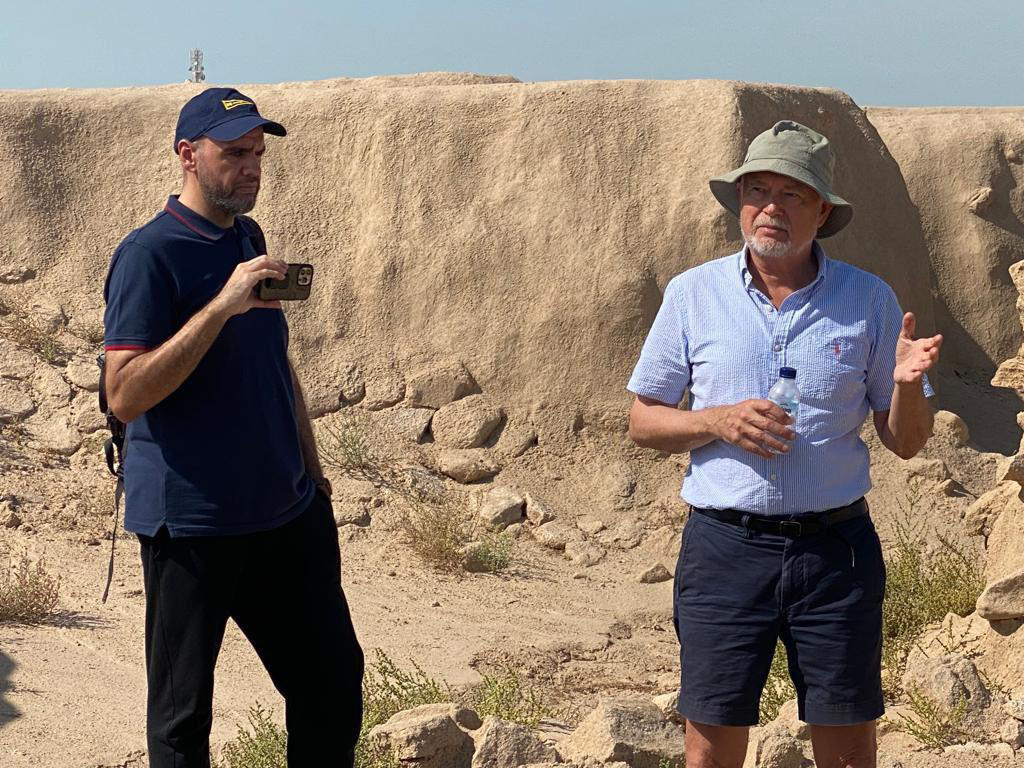By Zainab Behbehani
KUWAIT: Photos on social media showed several archaeological sites were subject to tampering and sabotage due to illicit excavations by unlicensed individuals. Amid a lack of laws related to protecting antiquities and over-excavation in the country, Kuwait has lost several archaeological sites, some of which go back thousands of years. Kuwait Times met archaeology and anthropology professor at Kuwait University Hassan Ashkanani to talk about the effect of over-excavation of archaeological sites and their protection.
KT: When can we consider a structure an antiquity?
Ashkanani: There is no school that agrees on certain standards on the importance of a building. We find there are various standards over the time period, which starts with 40 years and older. For example: The Palace of Justice (an urban civic heritage building 50 to 60 years old), Ice Skating Rink, Kuwait Towers, Sawaber Complex (built at the start of the eighties), and areas such as Dasma, Khaitan and Mansouriya (of engineering value). We find buildings that were designed by top architects, so we must keep them (for social value), like a small family house that represents old Kuwaiti diwaniyas from before 200 years.
It is possible for a structure to have personal value that is to be linked to a certain personality, be they a poet, intellectual, captain, writer, player, etc. Examples of such personalities include Um Kuthoum, Faten Hamamah, Khidaiwi's home and Baroun's home. There should also be attention to areas that may be more important than the building itself, such as those on Failaka Island, because the natural scene since 4,000 years until now did not change, because there were no excavations. Or structures in Subbiya and Kazma are important from a natural, historical and geological standpoint from 50 million years ago.
 KUWAIT: Prof. Ashkanani discusses with the international archaeological team.
KUWAIT: Prof. Ashkanani discusses with the international archaeological team.KT: What are the indicators of the presence of sabotage at archaeological sites?
Ashkanani: I go to an archaeological site that belongs to the National Council of Culture, Arts and Letters (protected by a fence), then later I find out the fence is damaged or I find remains of burnt coal and wood, vehicle tracks or overgrazing by camels, particularly in remote areas that are not under supervision. As for buildings, particularly recognized buildings (of historical heritage), we see restorations and adjustments being done without attention to scientific bases, such as husseiniyas, mosques, old shops, etc. Here comes the role of the state in educating investors about heritage sites by placing signs with a code that explains the rules related to restoring these buildings by not affecting its ancient history, such as old homes and diwaniyas.
KT: What if the building is the private property of a person?
Ashkanani: It will not be theirs, as any historical building recognized by the state becomes state property, so they cannot add to it, restore it and so on, unless the state sets certain standards, such as the weight and shape of signs hanged on the walls. There should be awareness through instructions on how to deal with old buildings that can still be operable. Souq Mubarakiya is operable in its entirety, in addition to some old Kuwaiti homes and diwaniyas.
KT: How is it possible to make sure individuals comply with the excavation law?
Ashkanani: Despite the existence of a law on antiquities that bans any tampering, be it by individuals or enthusiasts, many excavations are in violation and done in the open that harm antiquities. So we demand authorities to monitor the application of the law to protect the prestigious heritage of the country, which is being hurt by unspecialized persons.
The role of the National Council for Culture, Arts and Letters is important in activating laws pertaining to protecting antiquities, besides the importance of awareness campaigns through the media, including social media, be it to stop damaging archaeological sites or implementation of laws related to excavation.
KT: Should hobbyists be prevented from excavating? Why?
Ashkanani: I am against excavation by nonspecialized and unauthorized persons in archaeological areas, who will be in violation of the state law. They can damage evidence of the long march of human history due to their lack of experience in excavation. Even private companies who have licenses should have an aim behind the excavation, with participating scientists included in their budget, in addition to knowing how to decipher antiquities, such as determining the age of bone fragments. The state should hold persons who do not comply with the law to protect antiquities, which was issued by Amiri decree no. 11 in 1960.
KT: What is the archaeological excavation process and how is it done?
Ashkanani: Archaeological excavation aims at understanding previous civilizations that go back 40 to 2 million years, and can be recognized through human remains to know their behavior and lifestyles, such as food, drink, beliefs, politics and social system, besides interactions with their environment. The excavation is done in four steps - archaeological survey, excavation, analysis and explanation.
The archaeological survey is done by determining whether the site to be excavated has relics. In Kuwait, an archeological survey does not need huge efforts, especially since our sites are above ground, such as mosques, forts and other heritage structures.
Then we move to the excavation process, which is supposed to be done with extreme care so that over-digging does not harm the buried antiquities or the ground's layers, which could be an important guide in the discovery of previous civilizations. Laboratory analysis is the third step of the excavation process, then the explanation process, which tells us about the history of the archeological landmarks.











